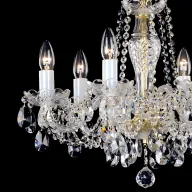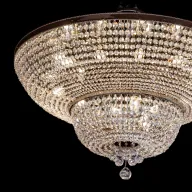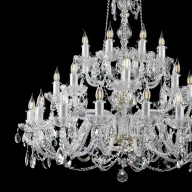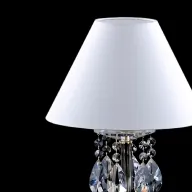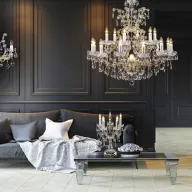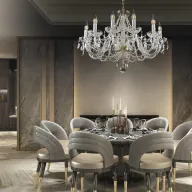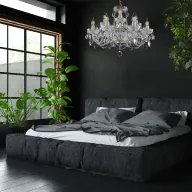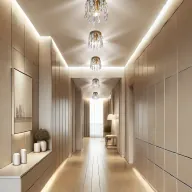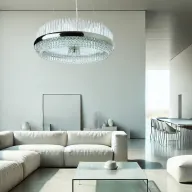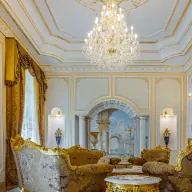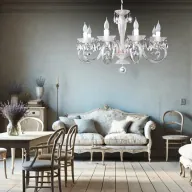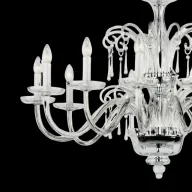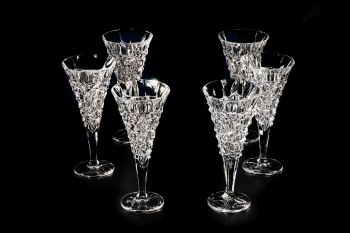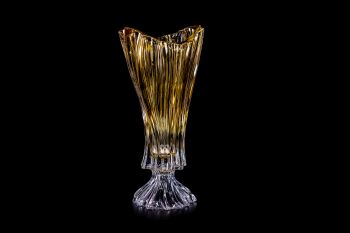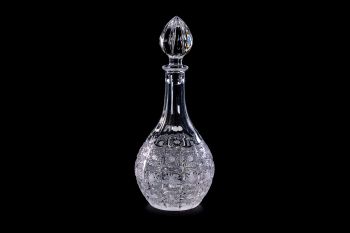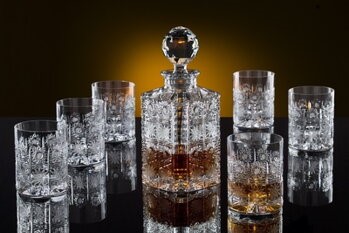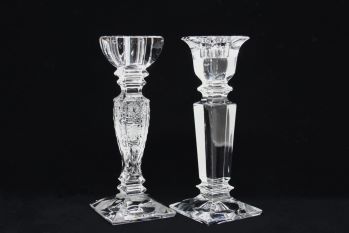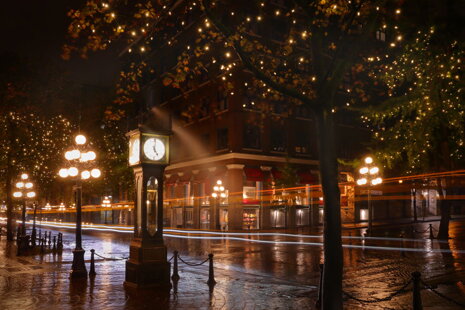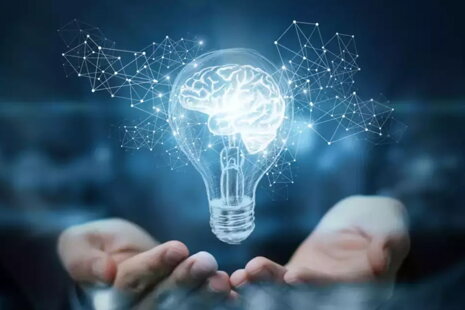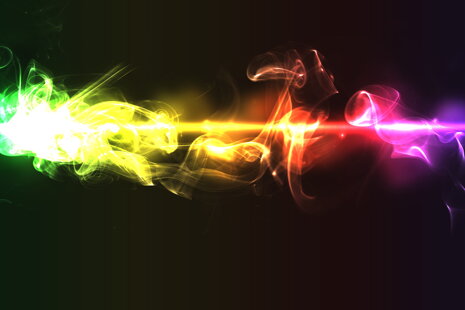What is the ideal light temperature
Added 9.11.2021 13:34.51
There are still many people who don't care about the temperature of the light at all. They just go to the shop, buy a bulb - ideally an energy-saving one - and they're done. After all, it's all about the light, isn't it? And it's not like you're choosing the colour you're going to paint your interior. Wrong. The choice of light is similarly important and should not be underestimated.
It affects us much more than we think. Find out why you should definitely not neglect this factor and what the optimum light temperature is for each room.

Why you should address the light temperature
The temperature of the light affects our feelings, bodily processes and the overall impression of the room. And the differences are really significant. Cold light builds up the human body - it reduces fatigue, helps maintain attention and increases work performance. This comes in handy in the office or at school, but certainly not in the bathroom, where you've just filled your bath and want to relax after a hard day. There, you'll be better served by warm light, which makes you feel more at ease and cosy.
In addition to the effect on our bodies, the shade of light determines how we perceive a space and how the colours, materials and accessories used stand out. You should keep this in mind when choosing lighting for individual rooms. Warm light goes well with orange to red, while cooler light goes perfectly with all shades of blue. The difference is really noticeable and stands out, especially when you have the opportunity for a direct comparison.
Have you bought bulbs in different colours by mistake? Try them out. And you'll know immediately. For example, you won't be able to put anything other than warm wood in your interior.
Chromaticity temperature and main categories of light temperature
You may have noticed that in this article we use both the term "temperature of light" and "colour of light". And you may be slightly confused. So let's be clear at the outset that they are essentially one and the same. The temperature of light also indicates the colour of light, otherwise known as the chromaticity temperature. This is given in kelvins (K) and tells us what colour of light the bulb emits.
A simple equation applies here - the more kelvins, the colder the light. Conversely, the fewer kelvins, the warmer and, to some extent, darker the light will be.
Bulb manufacturers label the colour and temperature of the light a little differently. Therefore, it is best to just go by the kelvin rating that must be indicated on the bulb. It is difficult to determine the exact value. Most of the time you will come across a range of kelvins in which the bulb glows. In general, bulbs or lamps can be divided into three main categories: warm white, white and cool white.
Let's take a closer look.

1. Warm white (approx. 2200-3300 K)
Lamps that glow in yellow and orange shades. They resemble the light of a candle or fire. Their colour has a pleasant, cosy and relaxing effect. Suitable for rooms where you want to create a relaxed atmosphere.
2. White (approx. 4000-5000 K)
Sometimes referred to as neutral or day white. The reason is simple - its glow is close to daylight, which reaches between 5000-7000 kelvin at midday. It minimally affects the surrounding environment and gives a pleasant, harmonious feeling.
3. Cold white (approx. 5500-8000 K)
A stark white light that picks up blue hues as the number of degrees on the Kelvin scale increases. The colour significantly brightens the environment in which it is used. With increasing chromaticity temperature it may no longer be too dazzling for some.
4. Extreme limits (600-2200 K, 8000-16000 K)
These values are not very common in artificial light. A value of 600 K is considered the limit of the scale. This can be referred to as red. At the other end of the spectrum, one can encounter values of 9000 K (some LED lamps), 14000 K (UV tubes used in solariums) or 20000 K (UV-C sterilization lamps) for artificial lights. In the open air, you may be surprised by the value of up to 12000 K that blue sky can achieve (and is comparable to the blue light produced by welding).
What temperature of artificial light to choose for different rooms?
Each room serves a slightly different purpose. Therefore, it is advisable to adjust the light temperature to best fill it.
Ideal light temperature for the kitchen
You can hardly cut meat, vegetables or even a slice of bread accurately if you can't see under your hands. In short, kitchen chandeliers should radiate bright and crisp to the world around you so that you are in full control of your cooking. We usually recommend a temperature of around 4000 K. However, you can choose to combine several types of lighting - for example, put a cooler light above the worktop and a slightly warmer bulb in the chandelier above the dining table.
It also depends on the type of kitchen - warmer shades of 2700-3000 K are suitable for rustic kitchens, while white light stands out in modern kitchens. Not sure which interior design style is closest to your heart? Our article makes it easy to find out.

Ideal light temperature for the living room
In the living room we mainly watch TV, spend time visiting or relax playing games, in short, well-deserved comfort. That is why we most often recommend to our clients ceiling lights for the living room in warmer colours with a value of 2700-3000 K.
Colder shades evoke daylight, so the brain will think it's daytime even at midnight, which can cause problems falling asleep. A popular alternative is to combine lights of different colours and choose them according to your preference and current activity. This is easily achieved. Simply choose a chandelier in the living room with a cooler 4000K colour as the "main" lighting for the living room and complement it with lamps with a warmer shade.
Looking for inspiration for your living room lighting? See how to use crystal lamps to make it a stylish and timeless room.

Ideal light temperature for the home office
Home office is becoming more and more widespread and it seems that this phenomenon is not going away. More and more people are setting up a special room at home just for work to create the right conditions for it and to better separate their private and professional lives, even if they both take place in the same place. Light around 4000K will boost your concentration and keep you alert for longer.

Ideal light temperature for the bedroom
Above all, we need to have the best possible environment in the bedroom for uninterrupted sleep, which will provide us with enough energy for the next day. That's why a bedroom chandelier with a warmer light colour between 2700 and 3000 K is the ideal central lighting for the bedroom to maintain your natural circadian rhythm.
And those who like to read before bed can put a lamp with a cooler light on their bedside table. But beware! It should not exceed 4000 K. Higher values encourage the brain to be more alert and can lead to insomnia.
Be convinced that crystal lamps can be a decoration in your bedroom.

Ideal light temperature for the bathroom
When we enter the bathroom every morning, we are regularly in for a slight shock. Not so much from the reflection in the mirror, but rather in the moment immediately following the light. And that's just as well. Thanks to the harsh light, we wake up immediately and are able to function again. In addition, we need to see ourselves clearly in order to maintain hygiene and grooming. That's why we recommend bathroom lights in a cooler colour, around 3000-4000 K.

Ideal light temperature for the hallway
The lighting of the corridor and the colour of the light on the staircase is entirely up to you, because we spend only a minimum of time here, so it basically doesn't matter what chromaticity temperature you choose. Our customers prefer chandeliers for the hallway and the house with a cooler shade of around 4000 K.

Light temperature and crystal chandeliers
One of the reasons people buy crystal chandeliers is the unmistakable sparkle and light reflections. What about the temperature and colour of light in crystal chandeliers? Crystal and its cut is developed so that the passage of any light results in maximum reflection. In other words - cold light will pull cold tones out of the glass when shining on the crystal, and warm light will draw out the warmer tones.
However, whether the light reflecting off the crystal is daylight or artificial will have a significant effect on the level of glare. Crystal will transmit the greatest range of colours in daylight. As a result, you will see beautiful rainbow "piggies" on walls or ceilings. However, LED technology is moving forward rapidly in this respect and, for example, bulbs with a CRI of 90 (Colour Rendering Index) are already approaching daylight in terms of colour.
And what do we recommend?
The vast majority of customers prefer warmer lighting colours. Warmer colours are intrinsically linked to traditional chandeliers, which many years ago were lit by the light of a burning candle. With more modern chandeliers that are fitted with LED bulbs, you can now let your imagination run wild. See how to choose the right chandelier.

We deliver ArtCrystal Tomeš crystal chandeliers without bulbs - so it is up to you and your discretion what light temperature you choose for your chandelier. For each chandelier, we indicate which bulbs of what wattage we recommend for that model. These are almost always traditional clear glass bulbs. These, unlike plastic or milky coloured bulbs, do not diminish the lustre of the crystal when the chandelier is lit.
However, they must be bulbs with a suitable socket. The chandeliers are fitted with standardised threads for bulbs with sockets E14 or E27. The choice of light source and light temperature is up to you. Need advice? Contact us. We will be happy to help you. And together we will tune your home to the tones that suit you best.







